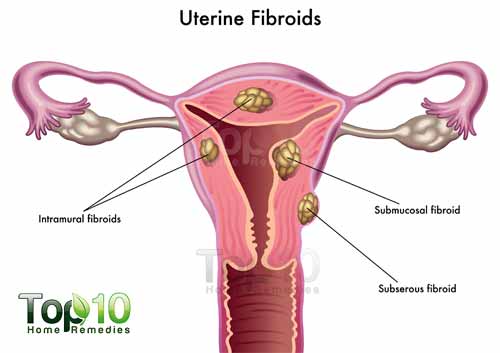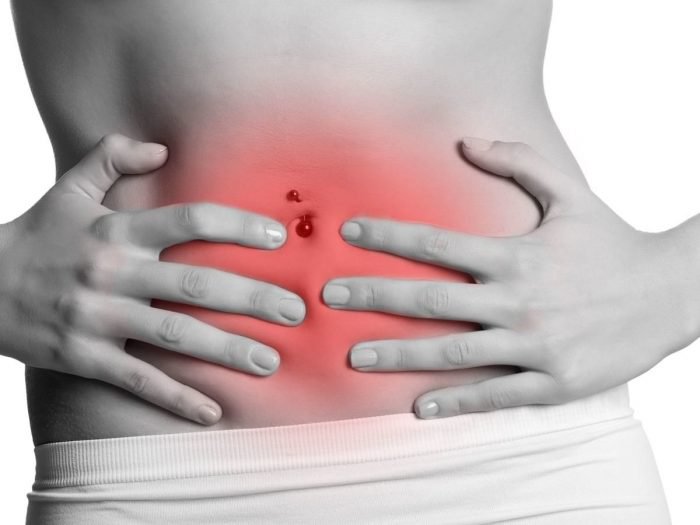Fibroids (रसोली ), also called uterine leiomyomas, are extremely common non-cancerous muscular tumors of the uterus. About 80 percent of women develop this problem by the age of 50.
The exact cause of uterine fibroids is still not known. Factors like genetics, abnormalities in the blood vessel or vascular system, hormones and other growth factors play an important role in the development of fibroids.
The problem is more common in obese and African-American women. Women who have never given birth to a child or who had their first menstrual cycle before age 10 also are considered more at risk of fibroids.
Most women with fibroids have no symptoms. However, some women experience symptoms such as heavy menstrual bleeding, prolonged menstrual periods, pelvic pressure and pain, bladder problems, rectal pressure and lower back pain.
Uterine fibroids are usually not dangerous, but can cause immense discomfort and lead to complications like anemia from heavy blood loss. In rare cases, they may cause complications that affect pregnancy.
In cases where there are no symptoms, treatment may not be necessary. However, proper diagnosis and treatment may be required if your symptoms are severe or causing complications. Along with conventional treatment, you can try some natural home remedies.
Note: Most herbal remedies, including chasteberry and milk thistle are not recommended during pregnancy and nursing, so consult your doctor before taking them.
Here are the top 10 home remedies for fibroids.
1. Castor Oil Pack
Applying a castor (Arandi) oil pack on the abdomen helps stimulate the lymphatic and circulatory systems, and increases lymphocytes (disease-fighting cells) to eliminate disease-causing toxins from the body. Many holistic practitioners believe a buildup of these toxins plays an important role in fibroid development.
Castor oil also contains ricinoleic acid with anti-inflammatory properties. The following remedy may help shrink fibroids and also aid in pain relief.
- Saturate a piece of wool flannel in castor oil.
- Place it on your abdomen and cover it with a plastic wrap.
- Place a heating pad or hot water bottle on it and cover that with an old towel.
- Leave it on for about one hour, and then remove it.
- Repeat three or four times a week for at least one month, or until you see improvement.
Note: Do not use this remedy during menstruation or if you are trying to conceive.
2. Chasteberry
Chasteberry, also known as Vitex agnus-castus, is native to southern Europe and the Mediterranean areas. It is an excellent herbal solution to maintain hormonal balance, lower estrogen levels and reduce inflammation. Simply take 25 to 30 drops of chasteberry tincture two to four times a day.
Note: Chasteberry will help regulate menstruation and bleeding between periods, but may also reduce the effectiveness of birth control pills.
3. Milk Thistle (दुग्ध रोम or चारोली)
This herbal remedy helps metabolize and get rid of excess estrogen. Estrogen is a reproductive hormone that stimulates cells to release growth factors, which in turn contributes to fibroid growth. Simply take 10 to 25 drops of a tincture of this herb up to three times a day for three to four months.
4. Dandelion (सिंहपर्णी or पीले फूल का एक पाक्रर का पौधा)
Many herbalists believe that poor liver function leading to poor elimination of excess hormones contributes to fibroids. Dandelion aids in liver detoxification and clearing excess estrogen from your body.
- Boil three tablespoons of dandelion root in three and one-half cups of water.
- Let it simmer for 15 minutes.
- Turn off the heat, and allow it to steep for another 15 minutes before straining it.
- Drink this tea three times a day for at least three months.
5. Green Tea
Studies indicate that green tea contains a compound called Epigallocatechin gallate (EGCG) that inhibits growth of fibroid cells, eventually increasing their death rate.
EGCG offers anti-inflammatory, antiproliferative and antioxidant effects. Researchers have found that in addition to reducing the size of fibroids, green tea can reduce the severity of fibroid symptoms.
Drink two or three cups of green tea or take two 400 mg green tea capsules daily for several months.
6. Milk
In a study published in the American Journal of Epidemiology in 2009, researchers at the Boston University School of Medicine found that black women who consumed four or more dairy servings a day had a 30 percent reduced incidence of uterine fibroids compared to those who consumed less than one serving a day.
Although the exact mechanism for this is not known, researchers believe that the calcium in dairy may help reduce cell proliferation. So, include more milk and dairy products in your daily diet.
You can also combine milk with blackstrap molasses that, being rich in iron and other nutrients, helps combat anemia that may result from heavy bleeding due to fibroids. Though not proven scientifically, blackstrap molasses is also believed to help shrink fibroids.
- Mix one or two tablespoons of blackstrap molasses in three-quarters cup of warm milk.
- Drink it once or twice a day on a regular basis, or at least for several months.
7. Burdock Root (बरडॉक जड़ )Tea
Burdock root improves the liver’s ability to metabolize estrogen, thereby reducing fibroids. Plus, being high in the lignan arctigenin, it can help reduce the size of fibroids and inhibit new tumor growth.
- Add one teaspoon of dried burdock root to a cup of hot water. Let it steep for 10 to 15 minutes, and then strain it. Drink this tea three times a day.
- Alternatively, you can take 10 to 25 drops of burdock root tincture three times per day.
Continue either of these remedies daily for three to four months.
8. Apple Cider Vinegar
Apple cider vinegar can be helpful in reducing fibroid symptoms because it helps remove toxins from the body and promotes fat loss. Though not proven scientifically, it is believed to help shrink fibroid tumors too.
- Add one teaspoon of organic apple cider vinegar to a glass of water.
- You can also add one tablespoon of blackstrap molasses or some natural sweetener for taste.
- Drink it daily on a regular basis. Gradually increase the dosage of apple cider vinegar from one teaspoon to one or two tablespoons per glass.
9. Garlic (लहसुन )
Garlic has natural antioxidant and anti-inflammatory properties that discourage the growth of tumors and uterine fibroids. So, eat three to five garlic cloves daily. If the garlic taste and odor are too strong for you, then follow it with a glass of milk. Milk will also help reduce the incidence of fibroids.
10. Indian Gooseberry (Amla)
Being an antioxidant and immunomodulator, Indian gooseberry is an excellent Ayurvedic remedy to reduce fibroids and their symptoms.
- Mix together one teaspoon each of Indian gooseberry powder and honey.
- Consume it daily, first thing in the morning.
- Continue for at least a few months to get positive results.
In addition to these remedies, make sure to exercise regularly and drink plenty of water throughout the day to flush out toxins. Exercising also helps regulate ovulation.
Plus, make whole grains like oats, brown rice, buckwheat and others a major part of your daily diet. Also eat beans, nuts, seeds and plenty of green vegetables.
Eating a high-fiber diet helps reduce estrogen, which in turn helps shrink fibroids. It is believed that green vegetables tend to protect women from developing fibroids, while eating red meat and ham increase the risk.
Apart from following these remedies, consult your doctor for proper diagnosis and treatment, especially if you are experiencing overly heavy or painful periods, bleeding between periods, persistent pelvic pain, pain during intercourse, or enlarged uterus and abdomen.
Resources:
www.sciencedaily.com/releases/2009/12/091204092459.htm
www.ncbi.nlm.nih.gov/pubmed/23950663
Source: http://www.top10homeremedies.com/home-remedies/home-remedies-fibroids.html











